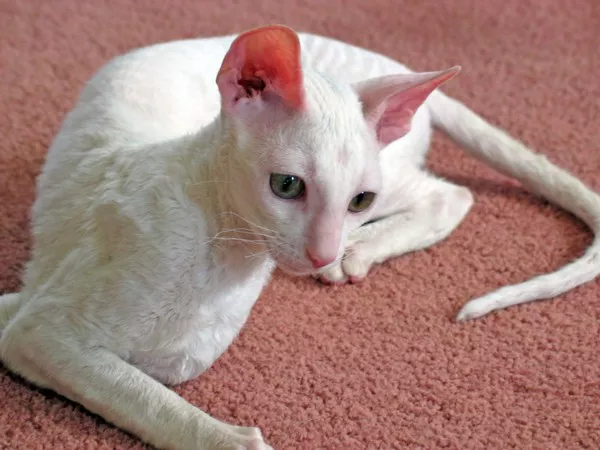Calico cats, with their distinctive tricolor coats and vibrant personalities, are beloved companions in households around the world. However, like all feline breeds, calicos may be susceptible to allergies that can impact their health and well-being. Understanding the triggers of allergies in calico cats and implementing effective management strategies is essential for ensuring their comfort and quality of life. In this comprehensive guide, we delve into the intricacies of allergies in calico cats, exploring common triggers, symptoms, diagnosis, and treatment options.
Introduction to Calico Cats and Allergies
The Enigmatic Appeal of Calico Felines
Calico cats, characterized by their unique tricolor coats featuring patches of white, black, and orange or brown fur, are renowned for their striking appearance and captivating charm. Considered a genetic marvel, calicos are not a distinct breed but rather a coat color pattern that can occur in various feline breeds, including domestic shorthairs and longhairs.
Navigating the Complexities of Feline Allergies
Feline allergies, whether environmental, food-related, or due to external parasites, can affect cats of all breeds and coat colors, including calicos. Allergies in cats manifest in a variety of ways, ranging from skin irritation and itching to respiratory symptoms and gastrointestinal distress. Identifying the specific triggers of allergies in calico cats is essential for effective management and treatment.
Common Allergens in Calico Cats
Environmental Allergens: Pollen, Dust, and Mold
Calico cats may develop allergies to environmental triggers such as pollen, dust mites, mold spores, and outdoor allergens. These allergens can provoke allergic reactions in susceptible cats, leading to symptoms such as sneezing, coughing, watery eyes, and nasal congestion. Minimizing exposure to environmental allergens through regular cleaning, air filtration, and indoor confinement can help alleviate symptoms in calico cats.
Food Allergens: Protein Sources and Additives
Food allergies in calico cats can arise from ingredients such as specific protein sources (e.g., chicken, beef, fish) or additives (e.g., artificial colors, flavors, preservatives) commonly found in commercial cat food. Symptoms of food allergies may include gastrointestinal upset, skin itching, ear inflammation, and hair loss. Identifying and eliminating the offending allergens from the cat’s diet through dietary trials and hypoallergenic formulas can help manage food-related allergies in calicos.
External Parasites: Fleas and Mites
External parasites such as fleas, ticks, and mites can trigger allergic reactions in calico cats through bites, saliva, or feces. Flea allergy dermatitis, characterized by intense itching, skin inflammation, and hair loss, is a common allergic reaction in cats exposed to flea infestations. Preventative measures such as regular flea control treatments, grooming, and environmental management can help reduce the risk of allergic reactions to external parasites in calicos.
Identifying Allergic Reactions in Calico Cats
Skin Symptoms: Itching, Scratching, and Dermatitis
Allergic reactions in calico cats often manifest as skin symptoms, including itching, scratching, redness, and inflammation. Calicos with allergies may exhibit excessive grooming behavior, leading to hair loss, scabs, and hot spots on the skin. Persistent scratching and self-trauma can exacerbate skin irritation and increase the risk of secondary infections.
Respiratory Symptoms: Sneezing, Coughing, and Wheezing
Environmental allergens such as pollen, dust, and mold can trigger respiratory symptoms in calico cats, including sneezing, coughing, wheezing, and nasal congestion. Respiratory allergies may worsen in response to seasonal changes, environmental triggers, or indoor pollutants. Monitoring respiratory symptoms and seeking veterinary care for persistent or severe symptoms is crucial for managing allergies in calicos.
Diagnosing Allergies in Calico Cats
Veterinary Evaluation and Diagnostic Tests
Diagnosing allergies in calico cats requires a thorough veterinary evaluation, including a comprehensive medical history, physical examination, and diagnostic tests. Skin tests, blood tests, and elimination diets may be utilized to identify specific allergens and determine the most appropriate treatment approach. Veterinary dermatologists specialize in diagnosing and treating allergic skin conditions in cats, including calicos.
Allergy Testing: Intradermal and Serological Testing
Intradermal skin testing and serological blood testing are commonly used diagnostic tools for identifying allergens in calico cats. Intradermal testing involves injecting small amounts of allergens into the skin and observing the cat’s reaction, while serological testing measures antibody levels in the blood in response to specific allergens. These tests help pinpoint the underlying triggers of allergies and guide targeted treatment strategies.
Managing Allergies in Calico Cats
Environmental Management: Minimizing Allergen Exposure
Effective management of allergies in calico cats involves minimizing exposure to known allergens through environmental control measures. This may include using hypoallergenic bedding, vacuuming and dusting regularly, maintaining proper humidity levels, and avoiding exposure to outdoor allergens during peak seasons. Creating an allergen-free environment can help alleviate symptoms and improve the cat’s quality of life.
Dietary Management: Eliminating Allergenic Ingredients
For calico cats with food allergies, dietary management plays a crucial role in symptom control and long-term management. Transitioning to a hypoallergenic diet formulated with novel protein sources and limited ingredients can help identify and eliminate potential food allergens. Close monitoring of the cat’s response to dietary changes and consultation with a veterinarian are essential for success.
Medical Treatment: Allergy Medications and Therapies
In cases where environmental or food allergies persist despite environmental and dietary management, medical treatment may be necessary to alleviate symptoms and improve the cat’s comfort. Allergy medications such as antihistamines, corticosteroids, and immunosuppressive drugs may be prescribed to reduce inflammation, itching, and allergic reactions. Immunotherapy, or allergy shots, may be recommended for calicos with severe or recurrent allergies to desensitize their immune response to specific allergens over time.
Conclusion: Enhancing Quality of Life for Allergic Calico Cats
In conclusion, allergies in calico cats can pose challenges for both feline companions and their owners. By understanding the common allergens, identifying allergic reactions, and implementing effective management strategies, calico cat owners can improve their pets’ comfort and quality of life. Collaboration with a veterinarian, veterinary dermatologist, or feline allergy specialist is essential for accurate diagnosis, personalized treatment, and ongoing support in managing allergies in calico cats. With proper care and attention, allergic calico cats can lead happy, healthy lives free from the burdens of allergic symptoms.



























